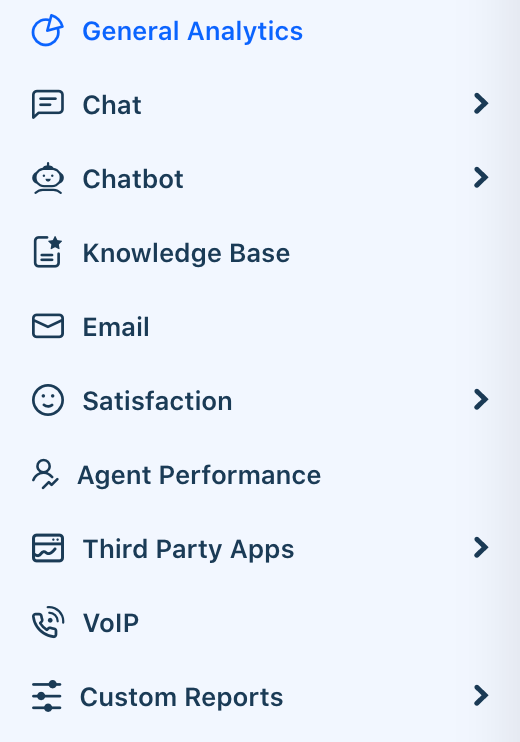If there’s one thing that’s a constant goal (and constant challenge) for organizations of all kinds and sizes, it’s having the right business analytics to make informed decisions — especially when it comes to engaging customers. Data is flowing out of every customer service conversation and improving customer experience hinges on making sense of that data.
But, the way we think about customer experience analytics in general is less consistent. Different businesses rely on different metrics. Some use them to hold their teams accountable, others to report to the board and investors on revenue impact, while others pay attention to meeting SLAs as a measure of performance. Often, it’s all of the above.
Through all of these goals, businesses often lose sight of the big picture or find it hard to unify data from disparate sources.
Measuring customer experience as a whole
Customer experience is about going beyond meeting pre-determined customer requirements or tracking team KPIs. Of course you’ll need to stay true to your commitments to customers, and most individual metrics can be really helpful. But, to truly understand customer experiences — and thrive through digital transformation — you need to combine detailed reports with a high-level overview of what’s happening in your customer’s journey.

How does your CX strategy stack up?
Take the assessment to find out.

For example, IBM proposes that business analytics can transform a customer service team, from fielding customer requests to enhancing the entire customer experience.
This involves getting clean insights for a variety of customer journey touchpoints — and tailoring that reporting to your needs. It’s not surprising that the global Customer Analytics market size is expected to reach $29.8 billion by 2026, rising at a market growth of 19.7 percent CAGR during this period.
Omnichannel demands
As a provider of customer experience technology, we’re always mindful of the multitude of channels people use to research and communicate with companies. The number of these channels keep rising along with touchpoints throughout the customer journey. In fact, ThinkWithGoogle reports that, customer journeys get more complex as the offline and online purchasing worlds blend together more.
Curious about this “phygital” trend? Learn more about technological advancements in the retail industry.
In this era of multiple channels and the shift toward a more complete conversational customer experience, it’s not enough to send an NPS survey every quarter or meet the minimum requirements of SLAs.
Customer journey analytics are far more complex than that. Your customers are on the web looking into reviews on your company and product; they’re on your social media profiles, on your website, on your live chat, your email, or your phone line. Every single touchpoint gives you important data — but it shouldn’t live in a silo.

See how our platform helps you have meaningful conversations with your customers and prepares you for the next wave of digital customer experience.
Getting to know your customers
It all comes to which business analytics will help you create a better customer experience. Everything else — like helping your team improve or bragging about your excellent CSAT scores — will naturally follow.
That’s why it’s important to choose technology that will help you understand your customers, their behaviors, their needs, and their impressions of your brand. For example, our customer Elevate uses our customer experience platform to track how conversations affect customers and where issues arise (e.g. which pages customers send the most chats or requests from).
We’ve designed our Analytics with this in mind — to help you get information you need about your customers from simple, like which browsers customers use and where they are in the world, to more complex, like which conversations convert the best.

The business analytics you need in one place
Innovative businesses try to learn more about the data that matters to them. Acquire knows that — and offers custom reporting, and analytics that can be customized to the unique customer journey of your business.
When your team has conversations with customers — no matter the channel — their activity and communications are readily available in a unified profile that instantly gives you insight into what your customers want or need. Data is no longer disparate but in one place, allowing fast cross-referencing from different sources to reduce resolution time.
Acquire’s business analytics capabilities let you get the reports you want and need to identify opportunities to optimize customer experience. Among the possibilities are tracking conversation volume and spikes, agent performance, chatbot performance, and more — and without leaving Acquire or worrying about important data slipping away.
All these insights can translate into plans to improve customer experience and lead generation. For instance, Acquire’s visitor activity reports may tell you when your busiest hours are or which countries your visitors are in. You can then take this information to make staffing decisions, like making sure your team is appropriately staffed during peak hours or hiring people closer to your visitors’ time zones.

Here are some other examples of what you can do with Acquire's business analytics:
- Implement chatbots for common FAQs to relieve your team or allow you to connect with after-hours visitors
- Identifying product or website bugs
- Optimize chatbot scripts according to what your customers are asking
- Create more knowledge base articles based on what your customers are searching for in order to improve self-service
- Identify the ‘habits’ of the highest-performing agents to help improve the rest of your team.
And more!
In the end, it’s about flexibility
The thing about data is you’ll probably have to change your approach depending on insights you get on what your customers want or need. And that doesn't mean you should have to change your entire tech stack to experiment with new metrics and add new kinds of reporting and business analytics on your customer journey.
That’s why it’s important to account for that when setting up your customer experience platform. Make sure you can always follow the data, no matter what.

